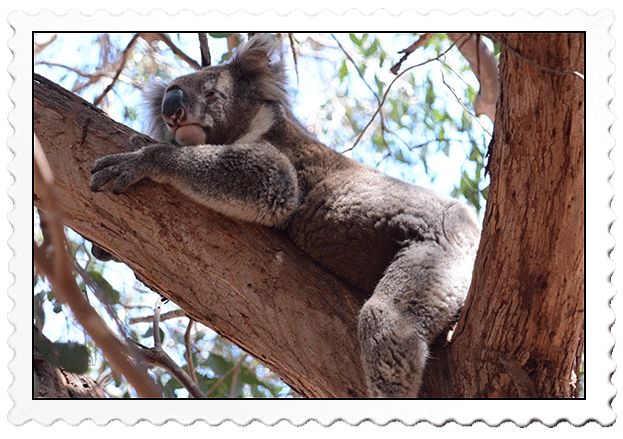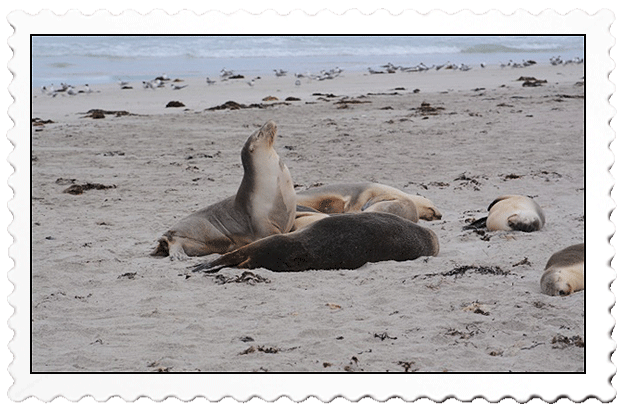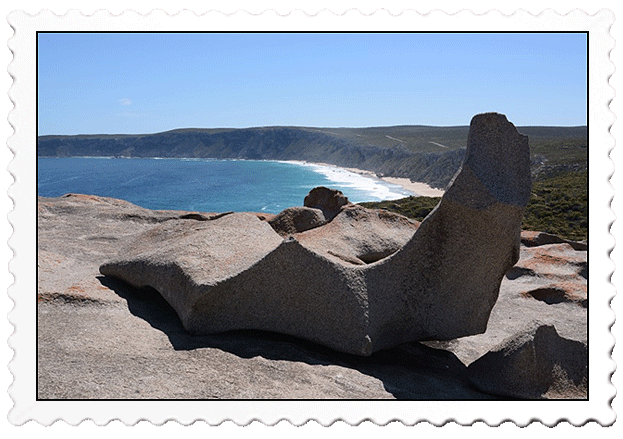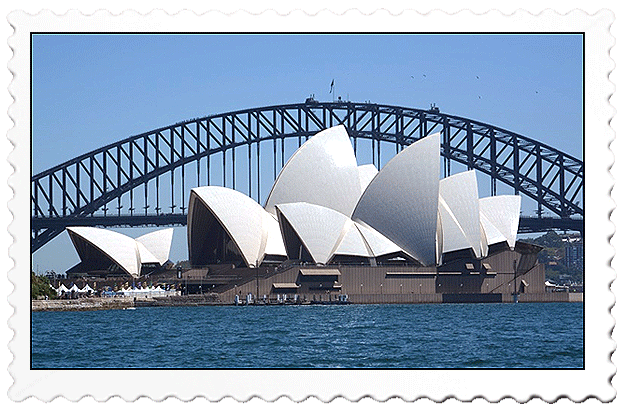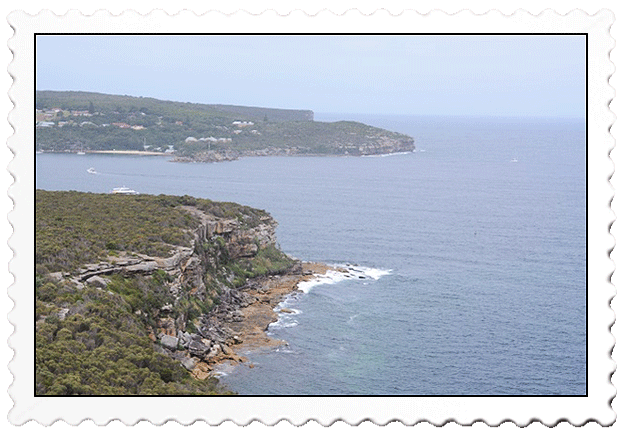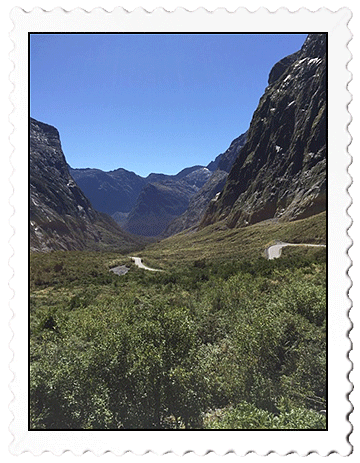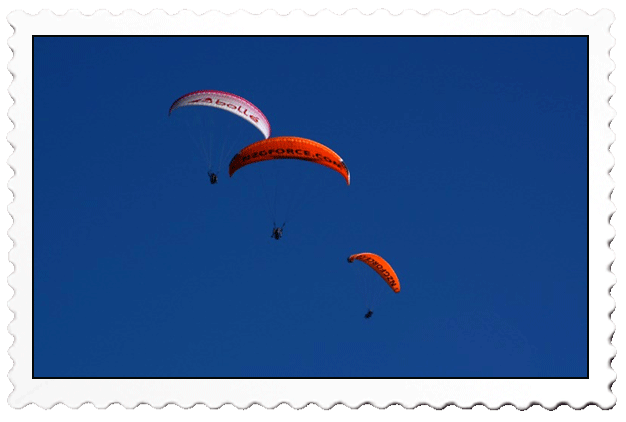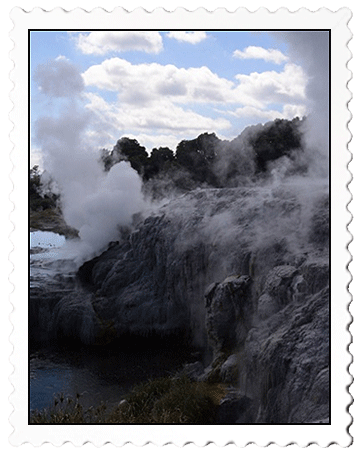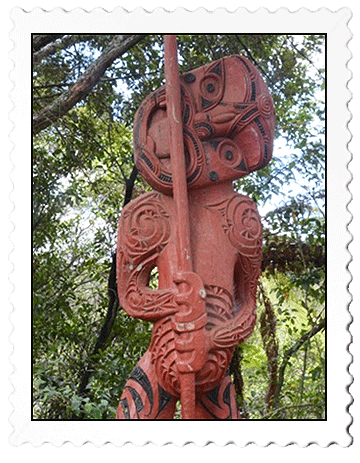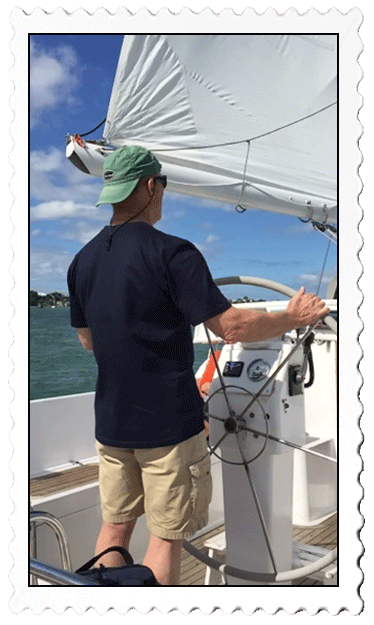By BOB MANWELL
Australia is big.
How big? Almost the size of the USA but with a population about equal to Texas. With so many miles between intriguing and interesting things to see do in this wonderful country and its neighbor, New Zealand, careful pretrip planning can avoid much frustration.
My partner, Linda Jacobs, and I spent the better part of a year researching, planning and charting a path through the myriad of things we wanted to experience in these two fascinating countries. Yeah, there are dozens of package tours you can sign up for but we haven't run across one yet that is a good fit with the things we like to do. Our preferred style of travel planning is to map out everything we want to do, dump it all into a spreadsheet, and then have a travel pro do the actual booking of flights, transfers, hotels, and some excursions.
Specialty excursions we book ourselves. These are mainly activities that are not in the usual repertoire of a Wisconsin travel agent, such as a live-aboard dive boat or ocean kayaking. This method has worked well for us.
We had to make some tough decisions based on time and expense and left some things undone - another trip in the future? - but all-in-all I think we fit about as much into 33 days as we possibly could and not drop with exhaustion.
In total, we flew 27, 496 miles, on 17 separate flights from 13 airports logging a total of 59 hours in the air. We traveled by plane, bus, automobile, ferry, kayak, powerboat and sailboat. We stayed overnight in 10 different hotels and one dive boat. We visited 5 world heritage sites did 6 hikes, 11 dives, tasted at four wineries (lost track of number of wines tasted by around 2p.m.) read four books, visited 12 cities and drove 212 miles on the left side of the road.
Australians are some of the friendliest folks we've met traveling anywhere. Filled with a zest for life they work hard but always make time for leisure and time outdoors. In fact, it seems like they practically live outdoors. They have a much better "work-life" balance than just about any American. They easily rival our Midwestern reputation for warmth and hospitality.
They have a delightful culture. You never see a vanity plate on a vehicle and you never see rolling junkers or hear loud mufflers. Men wear their pants on their waist and you are not hurried and must ask for your check in restaurants. There are no tips, they pay waitstaff fairly, bus drivers still make change and we didn't hear any rap, only 70s-80s American rock. People stand in orderly lines at bus stops and yield their seats to the elderly and small children.
As both countries are English speaking communication is easy. It's not the English we are used to but it is understandable - most of the time. Hikes are "tramps" and trails are "tracks." Mountains in New Zealand have "glassiers" and "petrol" is about $5.20 US for a gallon. Everything is metric so be ready for kilometers, liters, meters and Celsius. Football means rugby which is on the "tele" 24/7 and a person with initiative or high energy is said to be "off his own bat," in reference to that other national pastime, cricket. You can get barbequed "crock" and "roo" but don't ask for shrimp on the barbi, they don't have it, never did. And, contrary to popular thought, they don't drink Foster's.
What we did.
Dive on the Great Barrier Reef - world heritage site #1. This had been our bucket list for a long time. It is one of the most incredible ecosystems I've ever experienced. The abundance and diversity of life is simply mind-numbing. Daytrips are available but the best way to experience the reef is to book onto a live-aboard dive boat. Our excursion lasted three days and two nights.
The 80 foot boat slept two to a cabin. There was lounge space inside (air conditioned) and outside on an upper deck. We did 11dives in three locations (two night dives) and got to see the southern sky at night on the open ocean, the same way the early explorers saw it. The water was warm, 84° F, so we didn't need wetsuits for comfort but wore stinger suits for protection from stinging jellies.
Daintree Tropical Rainforest - world heritage site #2. A true tropical rainforest, Daintree extends from sea level to 425 meters (1,400') above sea level. It is home to the tree kangaroo.
Tree-kangaroos are marsupials of the genus Dendrolagus, and are adapted for arboreal locomotion. They inhabit the tropical rainforests of New Guinea, far northeastern Queensland (where Daintree is located) and some of the islands in the region.
We were incredibly fortunate to see one of them in the wild as their population is classified as threatened by the World Wildlife Fund. Daintree is also very near where in 1770 Lt. James Cook's ship, HMS Endeavor, grounded on the Great Barrier Reef. Stuck 23 miles offshore, Cook ordered the crew to throw an estimated 90,000 to 110,000 pounds of equipment and stores overboard to lighten the ship enough to float her off the reef.
Uluru (Ayers Rock) - world heritage site #3 & 4. A two hour flight took us from a tropical rainforest to the outback.

There is nothing I've ever seen to compare it to. This place says "Australia" in the boldest way. Both a cultural and an ecologic heritage site, there is a small village consisting of two hotels, a campground, a grocery and a cultural museum. All consumables - I mean everything - are trucked in from Adelaide over 700 kilometers away. The truck visits once per week and hauls rubbish on the return trip. The village is otherwise self-sufficient. All electricity is generated by solar panels, deep wells supply drinking water. Gray water is used for everything else. It is 280 miles to the nearest hospital. It hit 40C (104° F) every day we were there. The soil is coarse and a deep red color. Trees, we were told, grow no higher than a couple of feet for the first 20 years of life, concentrating instead on sending roots deep, deep into the earth. Only then can they grow up. A tall tree is maybe 10 meters, many are under five. There are clouds of blow flies that rival the mosquitoes I've experienced in Alaska and not a drop of water anywhere. What's the attraction you ask?

It's the massive sandstone monolith Uluru, aka Ayers Rock, and a chance to experience Aboriginal culture. Uluru is sacred to indigenous Australians and is thought to have started forming around 550 million years ago. It's within Uluru-Kata Tjuta National Park. Sunrises and sunsets are spectacular with all the red dust in the air. We witnessed one sunset and one sunrise over Uluru while serenaded by wild dingos whose song is as soulful as any wolf pack you've ever heard here in North America.
Barossa Valley. The Barossa Valley is not a world heritage site but is the Napa-Sonoma of Australian wine production. The big boys are all here; Yellowtail, Penfolds, Yalumba, Jacobs Creek etc., but the real deal is the dozens of small family vineyards that are scattered all across this region.
Heck, they even teach viticulture and winemaking in the local high school (the school has its own vineyard). If you go tasting - and I highly recommend it - be sure to hire a driver. The Aussies have little tolerance for drunk driving. A local driver knows the best places to taste and to dine afterward. Besides, it's hard enough to drive on the left when you're sober! We had the wonderful services of Trevor Wehr. Trevor has a B&B where we stayed and has been driving people around wine country for decades. Trevor was a registered tour guide (he retired in June of 2016) and up until 2015 chauffeured folks in a beautifully restored Auburn convertible that had been in his family since 1936.
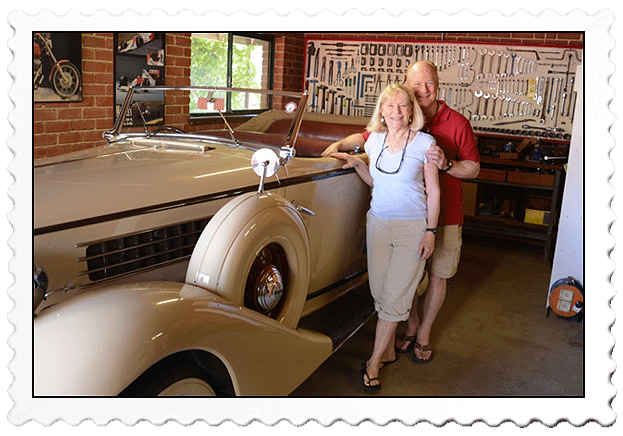
The body on the back half of the vehicle had been cut off and replaced with a flatbed during WW II to haul war supplies - Trevor's family were both farmers and manufacturers with war contracts at that time. Even though lovingly restored to original condition, the department of tourism determined that a vehicle with wooden floorboards, non- antilock drum brakes, no seat belts, air bags or roll-over protection could no longer be used for public transportation so he had to park that magnificent automobile in 2014. Instead, we traveled in a Toyota Land Cruiser.
Adelaide. Leaving the Barossa Valley we traveled to the southern Australian city of Adelaide. Founded in 1836 and named after a consort of King William IV, Adelaide is one of the few Australian cities to not have a convict history. It has beautiful churches and many city squares. It is a port city and a highlight of our visit there was a tour of an exact sailing replica of Cook's ship, HMS Endeavor. Hard to believe 90 humans could live in those cramped quarters eating wormy salt pork and hardtack for three years. The ordinary seaman slept in hammocks and ate in an area no more than five feet floor to ceiling. Cook and his officers had cabins measuring 22 square feet. Following her historic journeys throughout the Pacific the Endeavor returned to work as a cargo ship sailing to and from the Falkland Islands. Sold into private ownership in 1775, she was hired as a British troop transport during the American War of Independence and was scuttled in a blockade of Narragansett Bay, Rhode Island, in 1778.
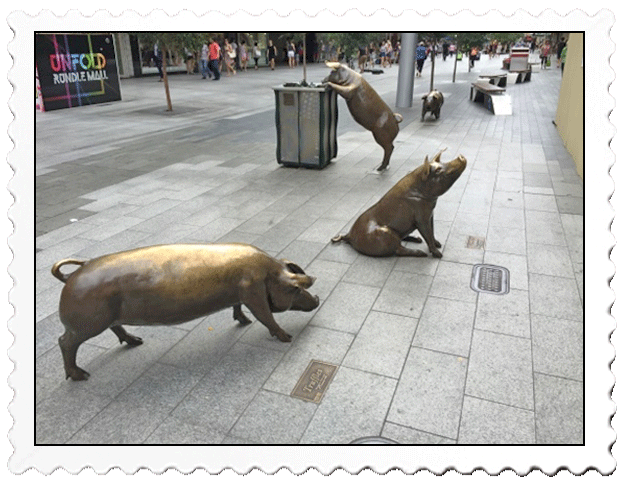
Adelaide also had a very lively shopping district with street performers and curious statuary.
Kangaroo Island. Adelaide also was the jumping off point for our longest day of the trip. A 19-hour round trip by bus and ferry to Kangaroo Island. KI is a wildlife lovers nirvana.
We stood within yards of lounging sea lions, stoned koala bears lounging in eucalyptus trees, soaring frigate birds, echidnas, and lots of kangaroos.
We also saw some spectacular geologic features such as Admiral's Arch and Remarkable Rocks.
Sydney - world heritage site #5. No trip to Australia would be complete without spending at least a few days in Sydney. Sydney has a large and extensive botanical park (officially the Royal Botanic Garden) with extensive collections of southern hemisphere flora. It's an easy place to spend a day or a half day wandering through the gardens.
Next to the gardens is Potts Point which offers great views of the Sydney Opera House and the Sydney Harbor Bridge. We also toured the National Aquarium. But, in the end, Sydney is a big city, not unlike other big cities and we only stayed there for two days. On our second day we took a ferry across Manly Bay and tramped in Sidney Harbor National Park.
We climbed to the park's high point where we could see almost the entire entrance to Sydney Harbor.
On to New Zealand. Although they seem close on the map, 1,300 miles of water separate Sydney from Auckland, New Zealand. We flew into Queenstown on NZ's southern island which is even farther. We rented a car there and drove another 170 Km. to Te Anau.
Te Anau and Milford Sound - world heritage site #5. Te Anau is a comfortable little town at the foot of the southern New Zealand
Alps and the gateway to Fiordland National Park. Beautiful in its own right it is one of numerous locations throughout this part of NZ where the Lord of the Rings trilogy was filmed. It is also a hub for world class trout fishing and big game hunting (red deer). We were there for another bucket list item; kayaking on Milford Sound. We rented boats from an outfit called Roscoe's kayaks. They provided us with suitable clothing and gear and a local guide for a day on the water. It was about an hour and 45 minute drive from Te Anau to the put-in point on a narrow winding road through the mountains. Valley after valley passed behind us as we dropped to the sea. Although called a sound, Milford is really a fiord and is as
spectacular a place to paddle as any in the world.
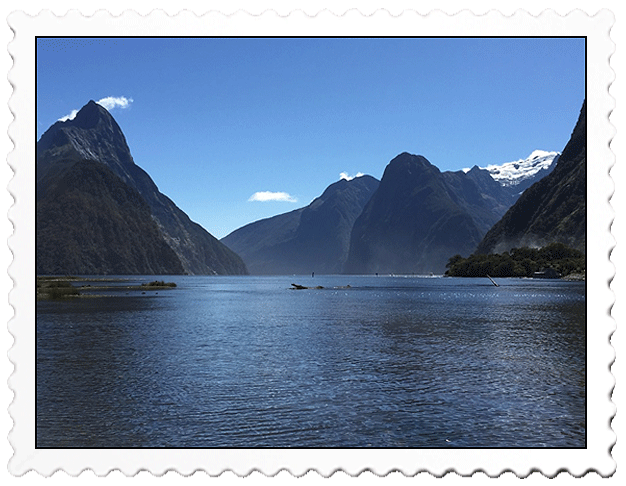
Two miles wide, 12 miles long and 1,680 feet deep, it is ringed with sheer granite cliffs rising to almost 7,000 feet. Waterfalls tumble over the precipices and fall hundreds of feet to the sea below. Dolphins gamboled around our boats fishing in the sound's cold waters, sea lions hauled themselves out on rocky points to lie in the sun warming themselves and perhaps to digest a recent meal. The sound receives on average 250 inches of rain a year and is the wettest inhabited place in New Zealand which made our day there all the more remarkable as we enjoyed a picture perfect day with blue sky and warm sun. Te Anau also has a wildlife park with several Kiwi's (the avian kind) that if you are persistent, you can spot inside their pen. These captive Kiwis are rescue birds that cannot be released to the wild. As a whole, the Kiwi population is considered either vulnerable or endangered and it is a treat to see one as they are very curious creatures. Their greatest threats today are introduced mammalian predators.
Queenstown. Kiwi's love the outdoors and Queenstown is a hub for outdoor activity. The nearest comparison would be if you combined Telluride, Seattle, Madison and Boulder into a single community about the size of Telluride. Sailing, backpacking, skiing, four-wheeling, parasailing, bungee jumping, motocrossing and mountainbiking, you name it, they have it. While there are a number of nice hotels, there are many more beds available in dozens of hostels.
With so many adrenaline- dripping gravity sports available the town is very popular with young nomads from pretty much everywhere in the world. They have a couple of good brewpubs and a hamburger joint that had a line around the block every evening from five to nine.
Rotorua. Rotorua is a place of hot springs complete with boiling mud, geysers and sulfur in the air.
This is a major cultural center of the Maori people. The Maori are the indigenous Polynesian people of New Zealand. They currently represent roughly 15% of the NZ population and have seven designated seats in the NZ Parliament. Their children attend Maori pre-school and learn the Maori language before moving to public schools and learning English.
We attended a Maori cultural performance that was fascinating. Afterward we attended a traditional Maori dinner that had been cooked in a geothermally - heated hole in the ground. I was privileged to sit next to a Maori
native at the dinner and had opportunity to comment that the dances performed for us at the dinner were all very warlike.
He replied that Maori were very warlike in their history. I asked who they were fighting.
He replied that there were dozens of distinct clans among the Maori and they fought each other over things like territory, access to game, or other resources and women.
Then the English arrived and they united as a people to fight the English. Fascinating.
Auckland. A modern city and a sailing hub, the most impressive things about Auckland were its cleanliness, the politeness of the people, and a wharf area with a couple of America's Cup boats either berthed or on display.
We spent one afternoon sailing on Auckland Harbor and another on a cold and very wet whale watching cruise - only we didn't see any whales.
It was a fun and adventurous five weeks but it was time to head home. While flying 9,200 miles east to west (i.e. Madison to Sydney) wasn't too hard to adjust to the time change flying the same distance west to east was a killer.
It took several days for us to adjust to the time change. Lucky for us, we're retired.
And yes, the Aussies do say, "G-day mate".












